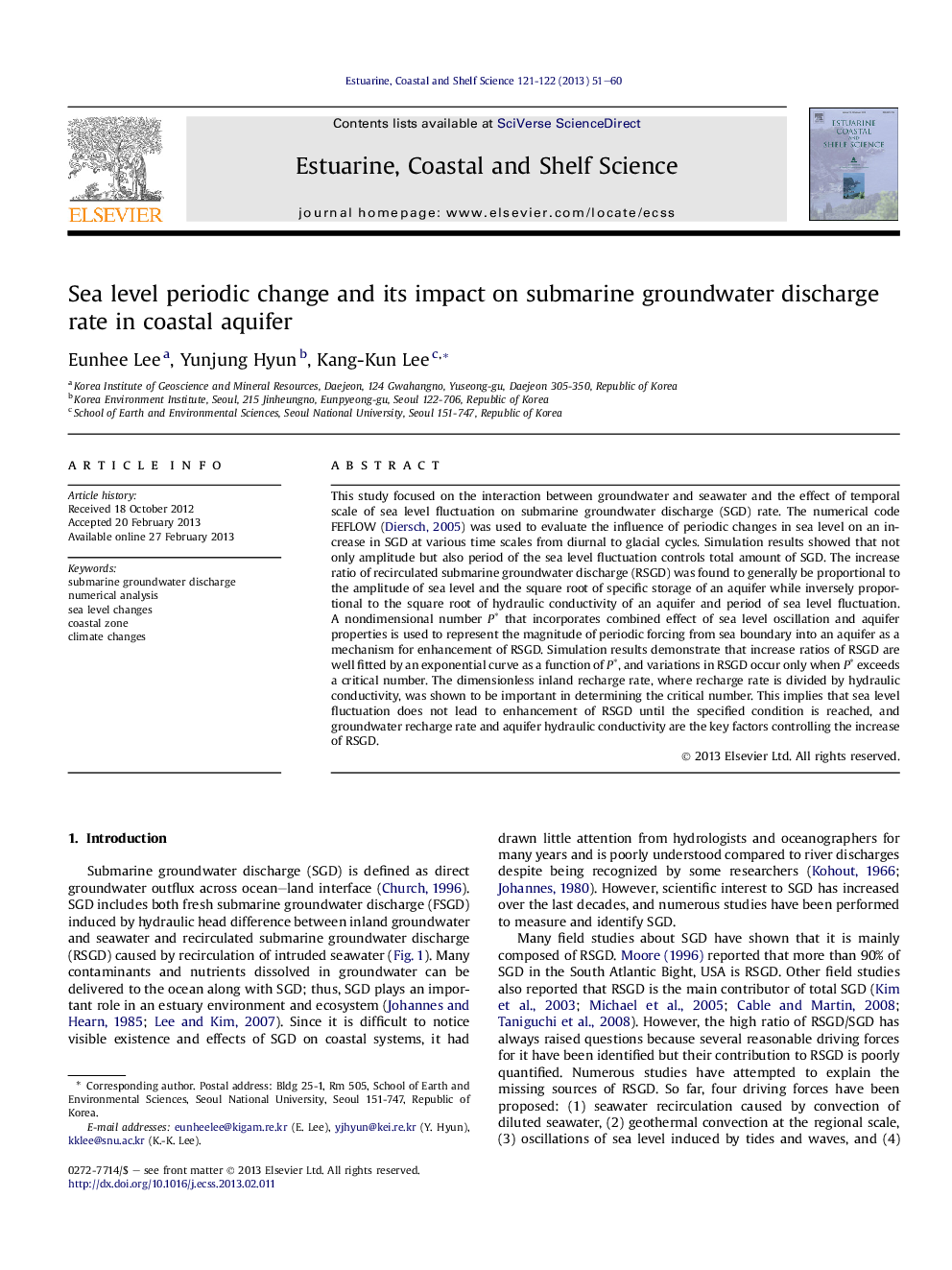| Article ID | Journal | Published Year | Pages | File Type |
|---|---|---|---|---|
| 4539944 | Estuarine, Coastal and Shelf Science | 2013 | 10 Pages |
This study focused on the interaction between groundwater and seawater and the effect of temporal scale of sea level fluctuation on submarine groundwater discharge (SGD) rate. The numerical code FEFLOW (Diersch, 2005) was used to evaluate the influence of periodic changes in sea level on an increase in SGD at various time scales from diurnal to glacial cycles. Simulation results showed that not only amplitude but also period of the sea level fluctuation controls total amount of SGD. The increase ratio of recirculated submarine groundwater discharge (RSGD) was found to generally be proportional to the amplitude of sea level and the square root of specific storage of an aquifer while inversely proportional to the square root of hydraulic conductivity of an aquifer and period of sea level fluctuation. A nondimensional number P∗ that incorporates combined effect of sea level oscillation and aquifer properties is used to represent the magnitude of periodic forcing from sea boundary into an aquifer as a mechanism for enhancement of RSGD. Simulation results demonstrate that increase ratios of RSGD are well fitted by an exponential curve as a function of P∗, and variations in RSGD occur only when P∗ exceeds a critical number. The dimensionless inland recharge rate, where recharge rate is divided by hydraulic conductivity, was shown to be important in determining the critical number. This implies that sea level fluctuation does not lead to enhancement of RSGD until the specified condition is reached, and groundwater recharge rate and aquifer hydraulic conductivity are the key factors controlling the increase of RSGD.
